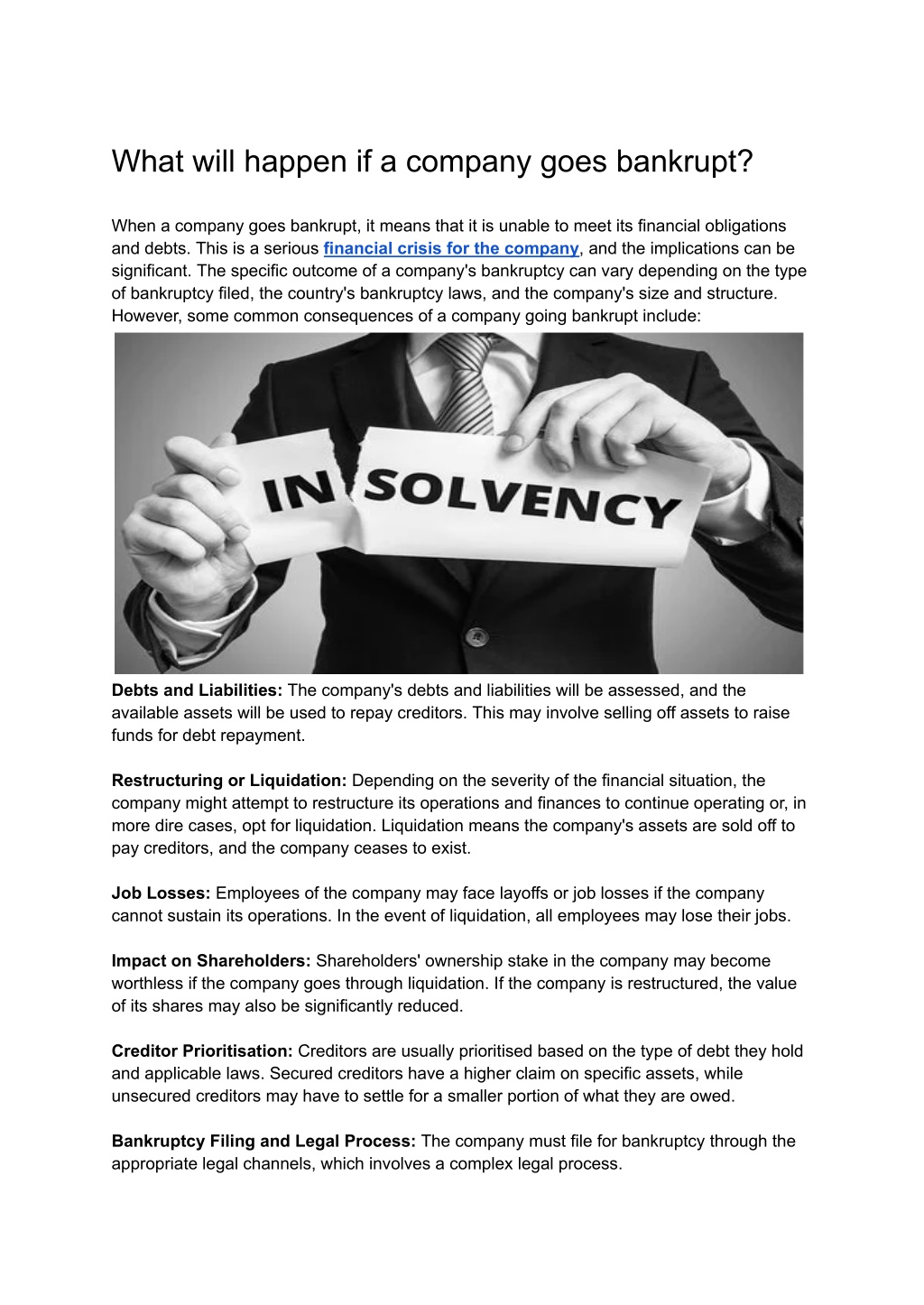In-Depth Overview to Company Administration: Effects When a Company Goes into Liquidation
In-Depth Overview to Company Administration: Effects When a Company Goes into Liquidation
Blog Article
The Refine and Effects of a Firm Entering Administration
As a firm deals with monetary distress, the decision to get in management marks an essential point that can have significant ramifications for all included parties. The procedure of going into administration is intricate, entailing a collection of steps that intend to browse the business towards possible healing or, in some cases, liquidation.

Review of Company Management Process
In the realm of company restructuring, a vital initial step is obtaining an extensive understanding of the detailed business management process. Business management refers to the official bankruptcy procedure that aims to save a monetarily troubled business or attain a much better outcome for the firm's creditors than would certainly be feasible in a liquidation scenario. This process involves the visit of a manager, that takes control of the company from its directors to examine the economic situation and identify the most effective strategy.
During management, the firm is granted protection from legal action by its creditors, supplying a halt duration to create a restructuring strategy. The manager collaborates with the firm's management, creditors, and other stakeholders to develop a method that might include marketing the business as a going concern, reaching a company voluntary arrangement (CVA) with creditors, or ultimately placing the company into liquidation if rescue attempts prove futile. The primary objective of firm management is to maximize the return to financial institutions while either returning the firm to solvency or shutting it down in an organized way.
Functions and Duties of Manager
Playing a critical role in looking after the business's financial affairs and decision-making processes, the manager thinks substantial obligations during the business restructuring process. The primary responsibility of the administrator is to act in the very best passions of the business's creditors, intending to attain the most beneficial end result feasible. what happens when a company goes into administration. This entails carrying out an extensive assessment of the company's monetary situation, establishing a restructuring plan, and applying methods to optimize returns to financial institutions
Furthermore, the manager is liable for communicating with various stakeholders, consisting of employees, vendors, and regulatory bodies, to make sure transparency and conformity throughout the management process. They have to additionally interact properly with shareholders, giving regular updates on the firm's progress and seeking their input when needed.
Moreover, the administrator plays a crucial function in managing the day-to-day procedures of business, making essential choices to keep continuity and protect worth. This includes assessing the stability of different restructuring choices, bargaining with creditors, and eventually leading the firm towards a successful departure from management.
Influence on Firm Stakeholders
Presuming an essential placement in looking after the firm's economic events and decision-making procedures, the manager's activities throughout the business restructuring process have a direct effect on various company stakeholders. Investors might experience a decrease in the worth of their financial investments as the firm's monetary problems are dealt with. Creditors, including lending institutions and vendors, may deal with uncertainties regarding the settlement of financial obligations owed to them. Staff check it out members commonly come across job insecurities as a result of prospective layoffs or changes in work conditions as component of the restructuring efforts. Consumers might experience disruptions in solutions or item availability throughout the administration procedure, affecting their trust fund and loyalty towards the business. Additionally, the area where the business runs might be impacted by prospective job losses or adjustments in the business's operations, affecting local economic situations. Efficient interaction from the administrator to stakeholders is critical in handling assumptions, reducing concerns, and promoting transparency throughout the management procedure.
Legal Effects and Obligations
During the procedure of business administration, careful consideration of the legal effects and commitments is vital to make sure compliance and protect the passions of all stakeholders included. When a business enters management, it activates a set of legal needs that need to be adhered to.
In addition, lawful implications emerge worrying the treatment of staff members. The administrator must follow work laws pertaining to redundancies, worker rights, and responsibilities to offer essential info to employee agents. into administration. Failing to adhere to these lawful requirements can lead to lawful action versus the company or its managers
In addition, the firm getting in management might have legal commitments with numerous parties, consisting of suppliers, consumers, and landlords. In essence, understanding and reference fulfilling lawful responsibilities are important aspects of navigating a firm via the management process.
Strategies for Firm Healing or Liquidation
In thinking about the future direction of a firm in administration, strategic preparation for either healing or liquidation is necessary to chart a viable course forward. When aiming for company healing, key techniques may include performing a thorough evaluation of business procedures to recognize inadequacies, renegotiating leases or contracts to improve capital, and implementing cost-cutting measures to boost profitability. Additionally, looking for new financial investment or funding choices, branching out profits streams, and focusing on core expertises can all contribute to an effective recovery strategy.
Conversely, in situations where company liquidation is considered one of the most appropriate training course of action, methods would certainly involve making best use of the value of possessions via efficient possession sales, resolving exceptional financial debts in a structured fashion, and complying with legal demands to make certain a smooth winding-up procedure. Communication with stakeholders, including customers, employees, and lenders, is critical in either scenario to maintain transparency and handle assumptions throughout the recuperation or liquidation procedure. Inevitably, picking the appropriate strategy depends upon a thorough assessment of the company's financial health, market placement, and long-lasting prospects.
Final Thought
Finally, the process of a business entering administration involves the consultation of a manager, that handles the responsibilities of managing the business's affairs. This process can have substantial effects for different stakeholders, including employees, creditors, and investors. It is necessary for business to thoroughly consider their options and approaches for either recuperating from monetary difficulties or waging liquidation in order to reduce possible legal implications and commitments.
Company management refers to the formal bankruptcy procedure that intends to rescue a monetarily troubled company or attain a better outcome for the company's financial institutions than would be feasible in a liquidation scenario. The manager functions with the business's monitoring, creditors, and various other stakeholders to develop a strategy that may entail selling the service top article as a going concern, getting to a firm voluntary plan (CVA) with creditors, or eventually positioning the company into liquidation if rescue attempts show useless. The primary objective of firm administration is to optimize the return to creditors while either returning the business to solvency or closing it down in an organized manner.

Report this page